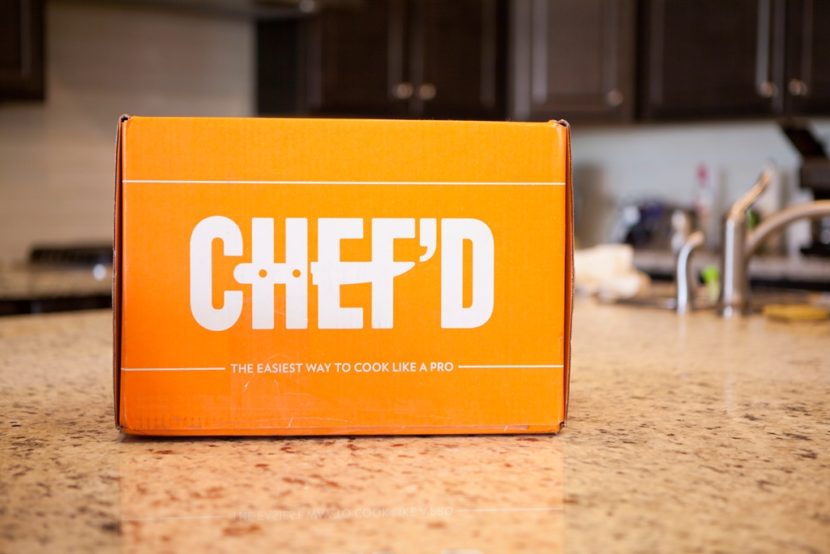Simple Solutions to Meal Kit Food Safety Concerns: Is Your Product at Risk?
By Suzanne Osborne
Consumer reports predict that one in every five dinners will be bought online by 2025. Meal kits are going to become an increasingly important part of the consumer diet, and therefore a growth opportunity for industry. What isn’t to love about this new service? Meal kits are similar to the popular Ikea furniture concept: they give consumers the exact ingredients and complete assembly instructions. Meal kits offer something akin to the convenience of a restaurant, but with the feeling of a home-cooked dinner. Businesses are popping up everywhere. Even retail giants like Amazon and Walmart have joined the game.
Yet, research suggests that the meal kit industry, as a new player in the food supply chain, has not yet been sufficiently regulated to ensure food safety. There are regulations surrounding how food is transported, but once delivered to it’s destination—such as a consumer’s front porch—the vendor is off the hook.
For example, time-temperature indicators (TTIs) will produce an irreversible colour change when exposed to temperatures above safety limits.
William Hallman and colleagues (Rutgers University, New Jersey) decided to examine how meal kits stack up against food safety standards. The team placed orders for more than 600 meal kits. It didn’t take long for Hallman’s team to become concerned. Nearly half of the food arrived with temperatures over safety limits.
Although meal kit companies recommend prompt refrigeration of the food once delivered, Hallman’s study found that many boxes were left on doorsteps for eight hours or more. The packaging also tended to be poor. There was not enough material to fill empty spaces or to secure food sitting beside coolants. There were few safety warnings for either the food or, in the case of dry ice, the packaging material itself. Many boxes were not labeled as perishable. Customers were left to make food safety choices without enough information.
While we will likely see proper regulatory best-practices put in place in the future, there is an immediate need to protect both customers and meal kit brands. Thankfully, commercially available solutions are available.
There are multiple companies (see table below) that now offer intelligent packaging. These packaging “sensors” can monitor the environment inside the package and communicate this with the customer. For example, time-temperature indicators (TTIs) will produce an irreversible colour change when exposed to temperatures above safety limits. They can also indicate how long the food was at unsafe temperatures. Customers are advised to not consume the product if the unsafe indicator colour appears.
The Rutgers University study confirms that the use of TTIs is still rare. Hallman indicates that TTIs were, “…something we looked for [in our study]. None of the packages used time-temperature indicators. Using them is one of the recommendations we have made to the industry and to regulators.” TTIs can be as simple as a self-adhesive sticker placed on the food package. They are an immediate, cost-effective solution.
Intelligent packaging offers your meal kit company the opportunity to take ownership of food safety while protecting and promoting your brand. An investment in TTIs, or a similar food safety alternative, ensures you play it safe until proper industry regulations have been established.
Commercially Available Time-Temperature Indicators
| Trade Name | Manufacturer |
|---|---|
| Timestrip Complete® | Timestrip UK Ltd. |
| Timestrip®PLUS Duo | Timestrip UK Ltd. |
| Monitormark™ | 3M™ |
| Fresh-Check® | Temptime Corp. |
| Onvu™ | Ciba Specialty Chemicals and Freshpoint |
| Checkpoint® | Vitsab |
| Freshpoint | Freshpoint Quality Assurance Ltd. |
| Tempack | Tempack |
| WarmMark® | ShockWatch® |
About the Author
Dr. Suzanne Osborne’s expertise is in the field of host-pathogen interactions and foodborne bacteria. She obtained her doctoral degree at McMaster University and worked as a Research Fellow at the Hospital for Sick Children (Toronto). She has received numerous awards for her research. Suzanne currently does freelance science writing and grant writing.

-
 FeaturedRisk management
The Cost of a Breach: What a Cyberattack Could Mean for Food Safety Recalls
FeaturedRisk management
The Cost of a Breach: What a Cyberattack Could Mean for Food Safety Recalls
-
 FeaturedRisk management
Securing the Food Chain: How ISO/IEC 27001 Strengthens Cybersecurity
FeaturedRisk management
Securing the Food Chain: How ISO/IEC 27001 Strengthens Cybersecurity
-
 FeaturedRisk management
Revolutionizing Food Safety Training: Breaking Out of the “Check-the-Box” Mentality
FeaturedRisk management
Revolutionizing Food Safety Training: Breaking Out of the “Check-the-Box” Mentality
-
 GFSI Standards
GFSI 2025: Building Trust, Tech-Forward Solutions, and Global Unity in Food Safety
GFSI Standards
GFSI 2025: Building Trust, Tech-Forward Solutions, and Global Unity in Food Safety
-
 FeaturedFood Safety
Integrated Pest Management: Strategies to Protect Your Brand’s Reputation
FeaturedFood Safety
Integrated Pest Management: Strategies to Protect Your Brand’s Reputation
-
 FeaturedFood Safety Culture & Training
No Open Door Policy: Challenges That Impact Pest Control in Food Processing Plants
FeaturedFood Safety Culture & Training
No Open Door Policy: Challenges That Impact Pest Control in Food Processing Plants




